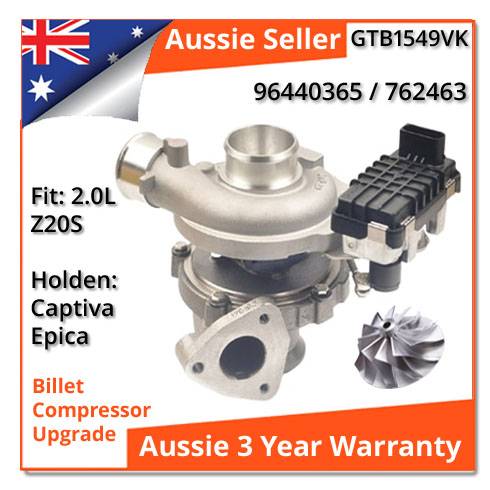The Holden Captiva Turbo
The Captiva is a medium-sized crossover SUV developed originally by Daewoo, the South Korean car-maker. Since 2006, Chevrolet has been using the moniker to sell the vehicle into many markets around the world, including the U.S., Europe and Asia. The Captiva uses the GM Theta platform, like its smaller cousin, the Opel Antara. The Captiva is a global vehicle, badged as the Daewoo Winstorm in South Korea and the Holden Captiva in Aussie.
The Captiva turbo is offered with a few options: a 2.0 liter VCDi turbocharger diesel, a 2.2 liter VCDi turbocharged four-cylinder diesel. There are also three other petrol models. The well-known 2.4 liter Family II four cylinder, a 3.0 liter SIDI V6, and a new 3.2 liter Alloytec V6. The diesels are popular in Europe, and the four-cylinder petrol’s are popular in U.S. The Australian-built Alloytec V6 takes top spot in Australia. The 1st generation was in production from 2006 to 2011, at which time it received a major update to bring it up to Chevrolet’s standards at the time.
How Reliable Is The Captiva Turbo?
The Holden Captiva is generally a trouble-free SUV, with minimal issues and problems reported by owners. It is susceptible to some mechanical issues like all other vehicles on the road, centered around the turbocharger. The issue is present in the diesel variants only, as the petrol engines are not turbocharged. A Captiva Turbo failure is one of the more major problems you will have with this vehicle. It is however, not a common issue, as many of the defective vehicles were taken in by Chevrolet and Holden. This was part of a recall whereby a Captiva Turbo Replacement was performed under in warranty. But there are still many out there that suffer turbocharger issues.
Some Common Causes Of Captiva Turbo failure
1. Insufficient Oil
Captiva Turbo failure problems are often the result of insufficient oil and subsequently, lubrication. Like the engine, the turbo requires a constant flow of clean oil. Inconsistencies can easily lead to malfunction. A buildup of carbon deposits may form, causing abrasive damage to internals inside the turbo. Thus reducing its overall efficiency and causing excessive wear that will lead to eventual failure. Changing the oil and the oil filter regularly will help ameliorate this problem. Additionally, the use of a quality fully-synthetic oil will also help.
2. Excessive Speeding
Another point of failure is turbo over-speeding. Turbos work by increasing pressure in the engine. They do this by utilizing exhaust gases to spin a turbine wheel in the turbo housing, spinning an impeller in another housing on the opposite side of the turbo. The impeller forces more clean air into the cylinders, thereby increasing ignition power. Leaks, cracks or poor seals in the air/gas system, force the turbo to work harder, to create the the same working pressure. This will reduce the effectiveness of the turbocharger and decrease its working life.
3. Foreign Objects
Foreign objects sometimes cause turbocharger failure. Broken engine parts, dust particles and dirt can find their way into the turbocharger. these objects can enter via the turbine or the compressor. So it is vital that at install or at scheduled maintenance, everything is kept clean, checked and air filters are replaced at appropriate intervals.
What To Do When Your Captiva Turbo Needs Replacing
A turbocharger is a vital part of the engine system. It is susceptible to wear so will need replacing after a certain amount of driving, even under correct maintenance schedules.
Replacing the turbocharger is a complex job, and not one to be done at home by unqualified ‘back-yard’ mechanics. There is a process for best practice required for turbocharger installation as follows:
- New oil filter, quality engine oil, new air filter.
- New oil feed line (or at minimum ultrasonically cleaned where appropriate).
- Clean and flush ENTIRE oil system, including dropping out sump and cleaning oil pick up / oil scavenge pump (where fitted) cleaned and tested, oil check valves (where fitted) tested for correct cracking pressure, replaced or cleaned where necessary.
- Sump ventilation/engine breather system including breather hoses and filters cleaned or replaced where necessary.
- Oil pressure through now-cleaned oil system (via new or cleaned feed line) MUST be tested for correct flow of oil to turbo.
- Return of oil to sump checked and must flow freely through return line without ‘pooling’ in line and no back pressure from sump (a symptom of poor sump ventilation).
- Turbo must be primed before initial start-up with oil injection into turbo oil gallery to coat thrust bearing, hand cranks of shaft to encourage oil distribution, and ignition-less engine cranks to build oil pressure in feed line and oil gallery prior to initial start-up.
- Intercooler removed and cleaned, induction pipes checked and cleaned, and exhaust cleaned if previous turbo leaked oil into the exhaust system.
- EGR Valve and DPF system should be checked and cleaned.
- It is also recommended that the Air Flow Meter be replaced at same time as turbo or cleaned at minimum.
- Water lines checked (in the case of water-cooled turbos), to be free from obstruction and hoses are not damaged internally.
- Entire installation process clean and free from any debris (this includes NOT using liquid gaskets, liquid sealant or exhaust sealing paste on any flange that can be sucked into turbo. Please only use correct stainless or fibre/paper gaskets either supplied or as recommended for that turbo.
We recommend having an authorized dealer or reputable mechanic shop carry out the procedure.
![]() Need to replace a Captiva Turbo:
Need to replace a Captiva Turbo:
Check out Our Affordable aftermarket Billet Upgraded Replacement Holden Captiva Turbochargers HERE
![]() Need help with another Turbocharger:
Need help with another Turbocharger:
Contact Us on 0490 059 316

